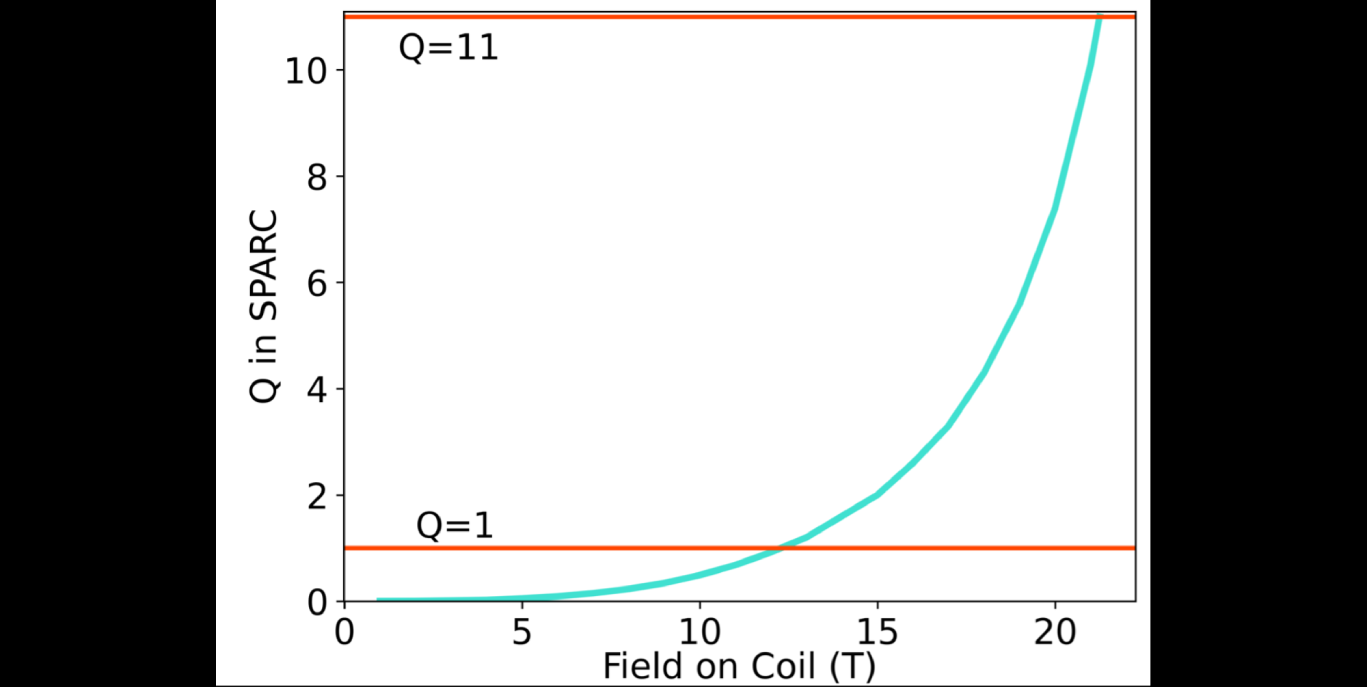The TFMC and the Path to SPARC
by Alex Creely/CFS. September 2021
The CFS and MIT PSFC team’s incredible achievement of a 20 T, large bore, HTS magnet will certainly have wide-ranging and long-lasting implications through a variety of industries. The most immediate, however, is that the design assumptions of the SPARC tokamak have been proven in real hardware, giving the green light for the construction of the world’s first net fusion energy tokamak. This is the next step toward deploying clean fusion energy worldwide.
As described in the “Overview of the SPARC Tokamak” article in the Journal of Plasma Physics, as well as the other articles in the SPARC special issue published in September 2020, the physics of tokamaks, and of SPARC in particular, is generally well understood. These articles show that if SPARC is constructed as designed, it is projected to achieve Q=11 and 140 MW of fusion power with nominal physics assumptions.
In particular, this high performance is enabled by SPARC’s high magnetic field, 12.2 T on the plasma axis. Given SPARC’s geometry, this field at the plasma corresponds to a field of just above 20 T at the toroidal field coil. The graph above shows the relationship between the achievable fusion gain Q in SPARC and the maximum magnetic field at the toroidal field coil. In this relationship the rest of the machine design (major radius, minor radius, elongation, etc.) and plasma physics assumptions (safety factor, confinement regime, stability limits, etc.) are kept constant, as laid out in the physics articles. This plot shows just how strongly fusion gain depends on magnetic field and thus why this magnet is so game-changing.
For the last several years, the SPARC design team has been working under the assumption that a toroidal field coil could be built that generates a 20T field on coil. This was by no means a certainty, as when ITER was designed, "The magnetic field that [was] practically achievable with available superconducting materials [was] limited to approximately 13 T on the conductor." [M. Huguet et al, IEEE, 1993]. The TFMC test has now shattered this previous limit, opening up a huge new design space and demonstrating that one can indeed build the SPARC TF magnet.
With the key magnet technology demonstrated, a design for SPARC in hand, and a site selected and cleared, the team is ready to take the next leap forward and build the world’s first net fusion energy tokamak. Today we step from the TFMC to SPARC, and not long after to clean fusion power plants around the world!
